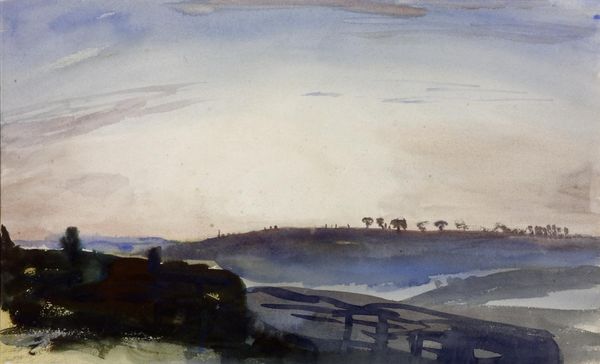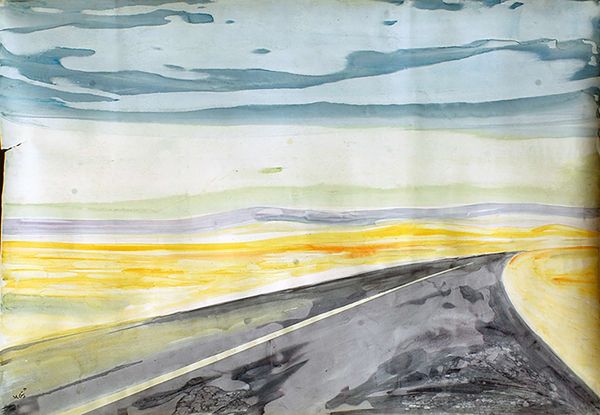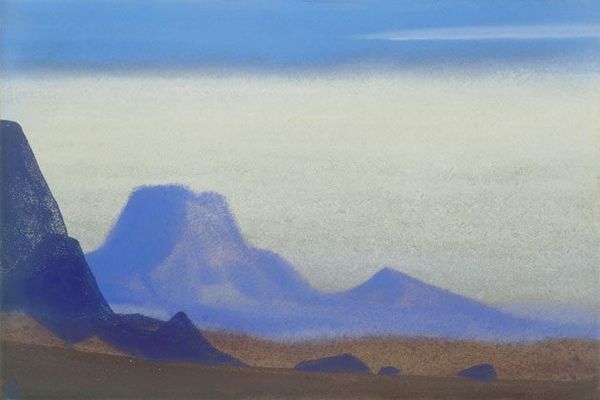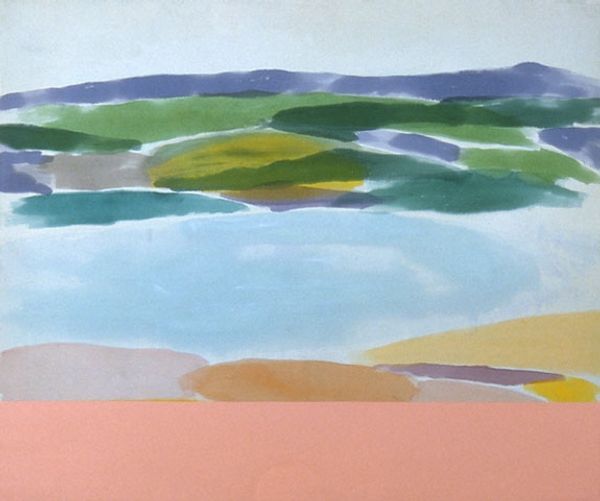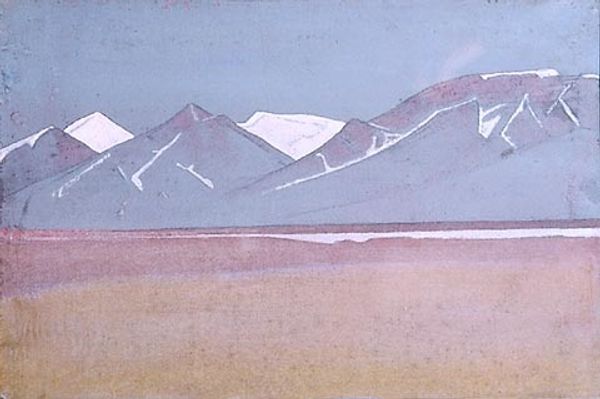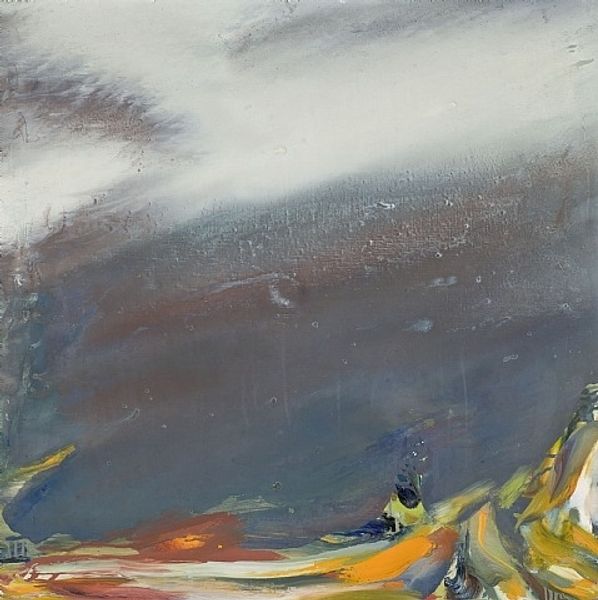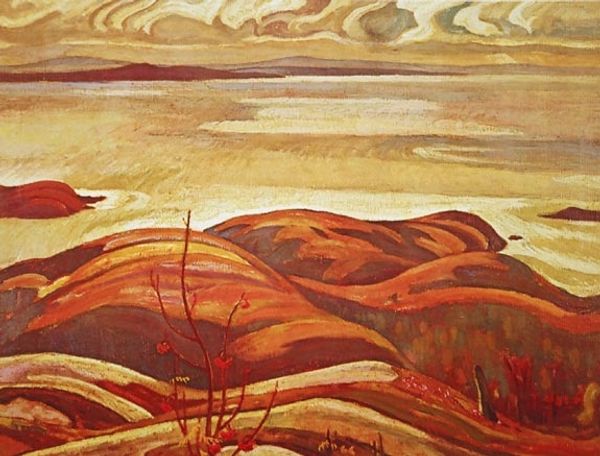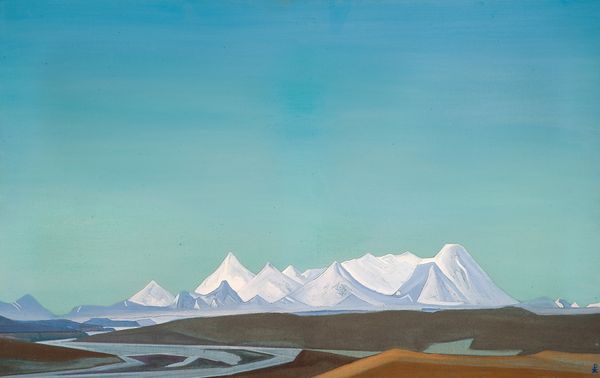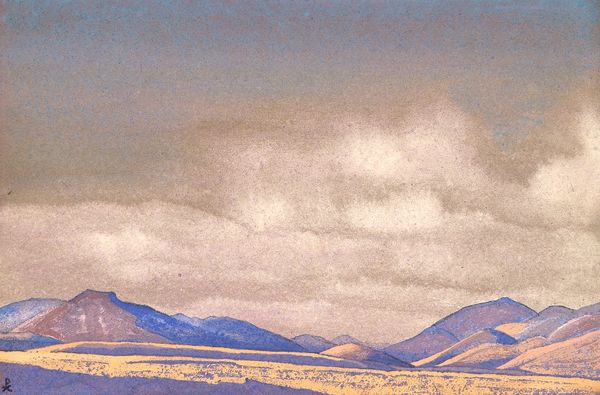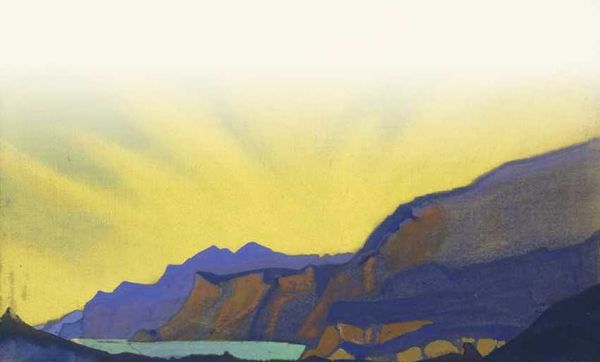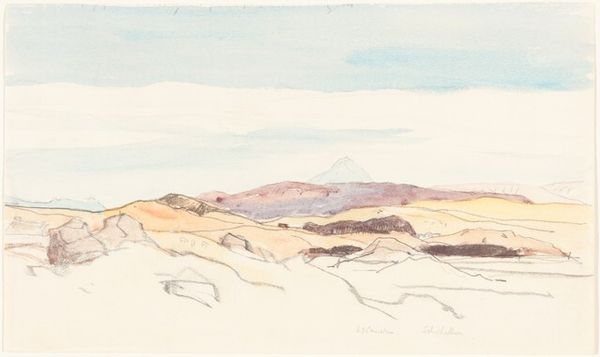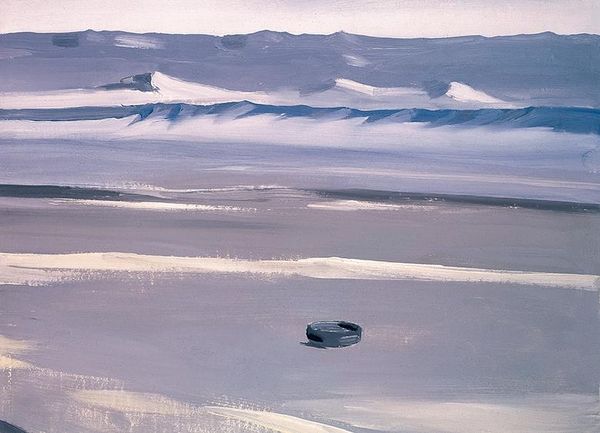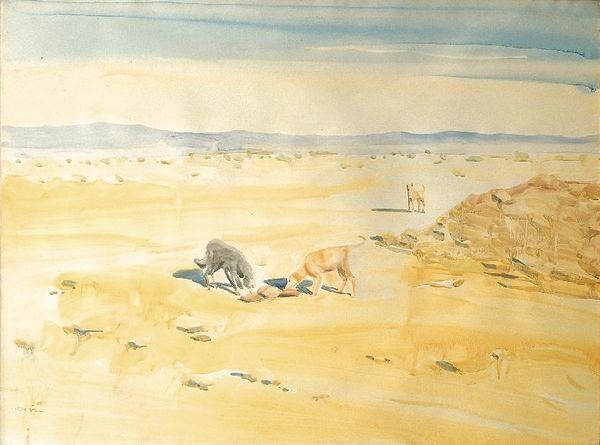
Copyright: Mostafa Dashti,Fair Use
Curator: Looking at this “Untitled” piece from 1989 by Mostafa Dashti, one can’t help but feel a certain tranquility. What strikes you first about it? Editor: It’s stark. The raw canvas coming through in places, those heavily applied oil paints… it’s as if the earth itself is protesting, pushing its materiality forward. Curator: Absolutely. Dashti's use of oil on canvas speaks volumes about his socio-political context. Painted in Iran, this work echoes a moment of reevaluation after the Iran-Iraq war, when notions of identity, displacement, and rebuilding were intensely debated. The absence of figures feels loaded, doesn't it? Editor: Exactly. Where are the laborers? The builders? Instead, we’re presented with an abstract landscape, potentially indicative of the scars of war. You can almost feel the manual effort involved in applying such thick paint, each brushstroke mirroring the hard work of reconstruction. Curator: That resonates deeply. Considering post-revolutionary Iran, this painting could serve as a veiled commentary on gendered experiences, particularly considering the limited roles often imposed on women during that period. A landscape devoid of people perhaps speaks to that silencing. Editor: Interesting, to frame it that way. From my perspective, the choice of such earthy pigments feels intrinsically linked to the natural resources of the land—the oil beneath their feet, becoming the oil on the canvas. Curator: It's fascinating how this one canvas can trigger such distinct yet complementary interpretations, speaking volumes on material usage and broader societal discourses on belonging. Editor: Yes, a seemingly simple landscape reveals a network of layered complexities regarding material realities and social conditions. It provides insight into a turbulent time of reshaping material existence through abstraction.
Comments
No comments
Be the first to comment and join the conversation on the ultimate creative platform.
